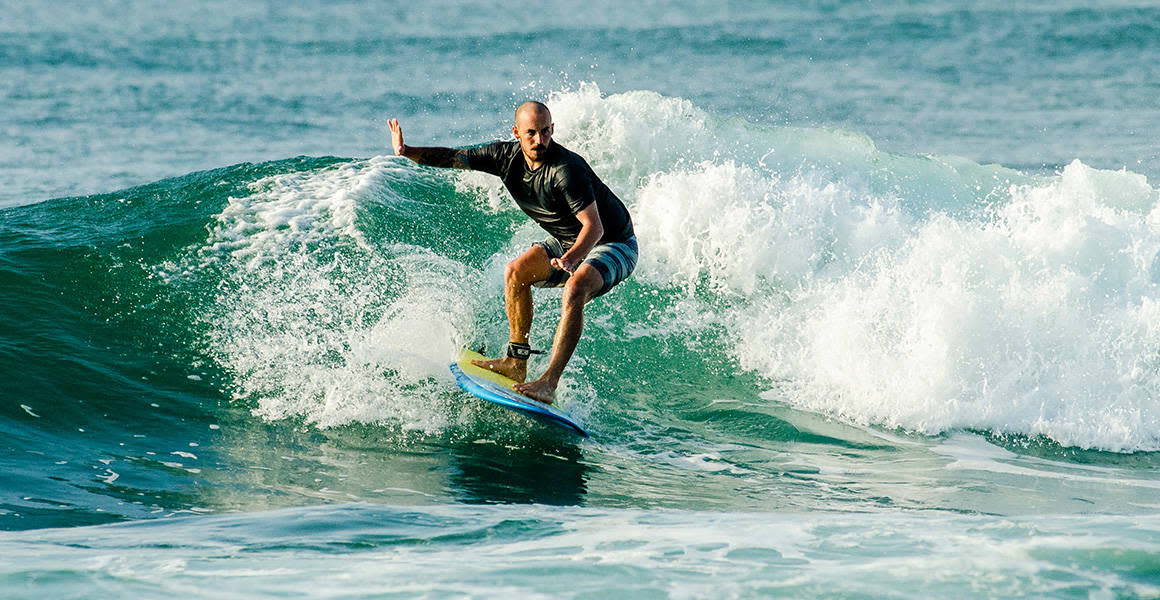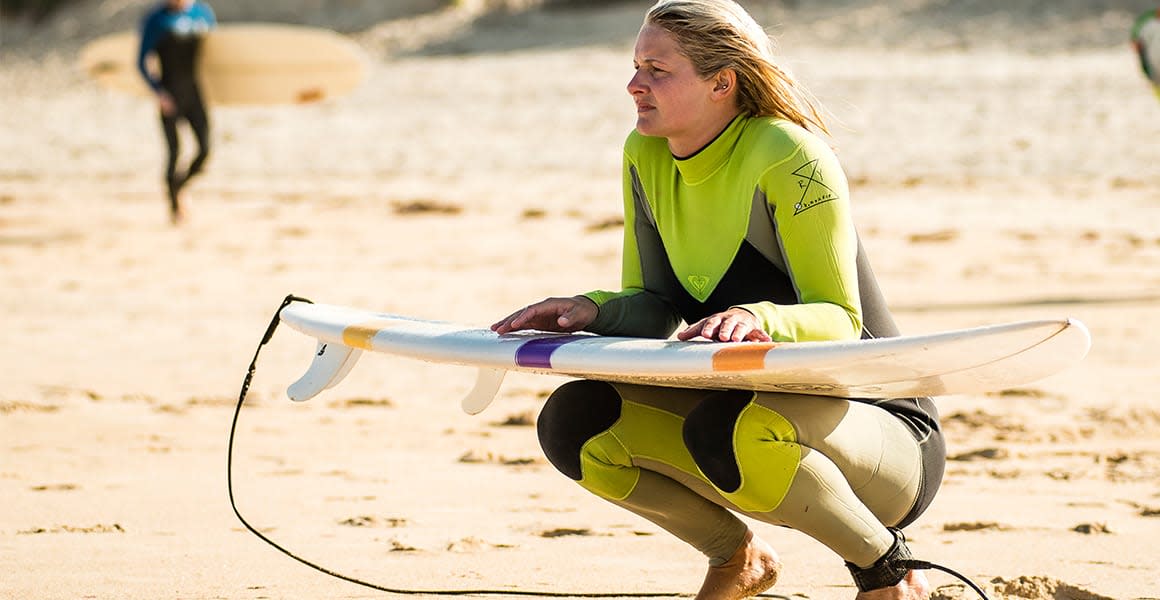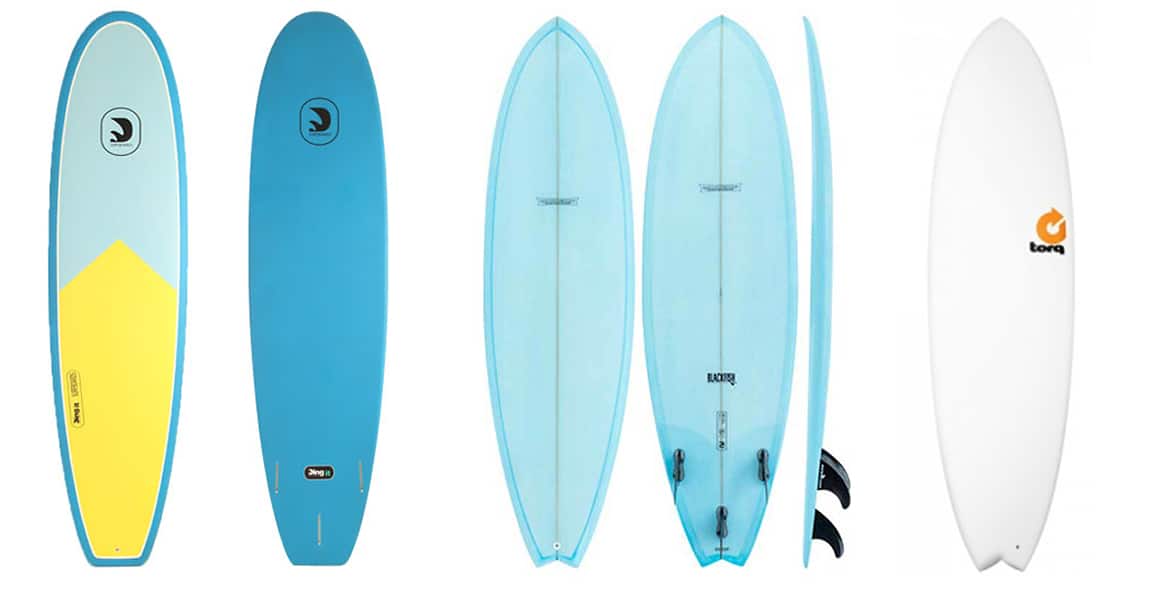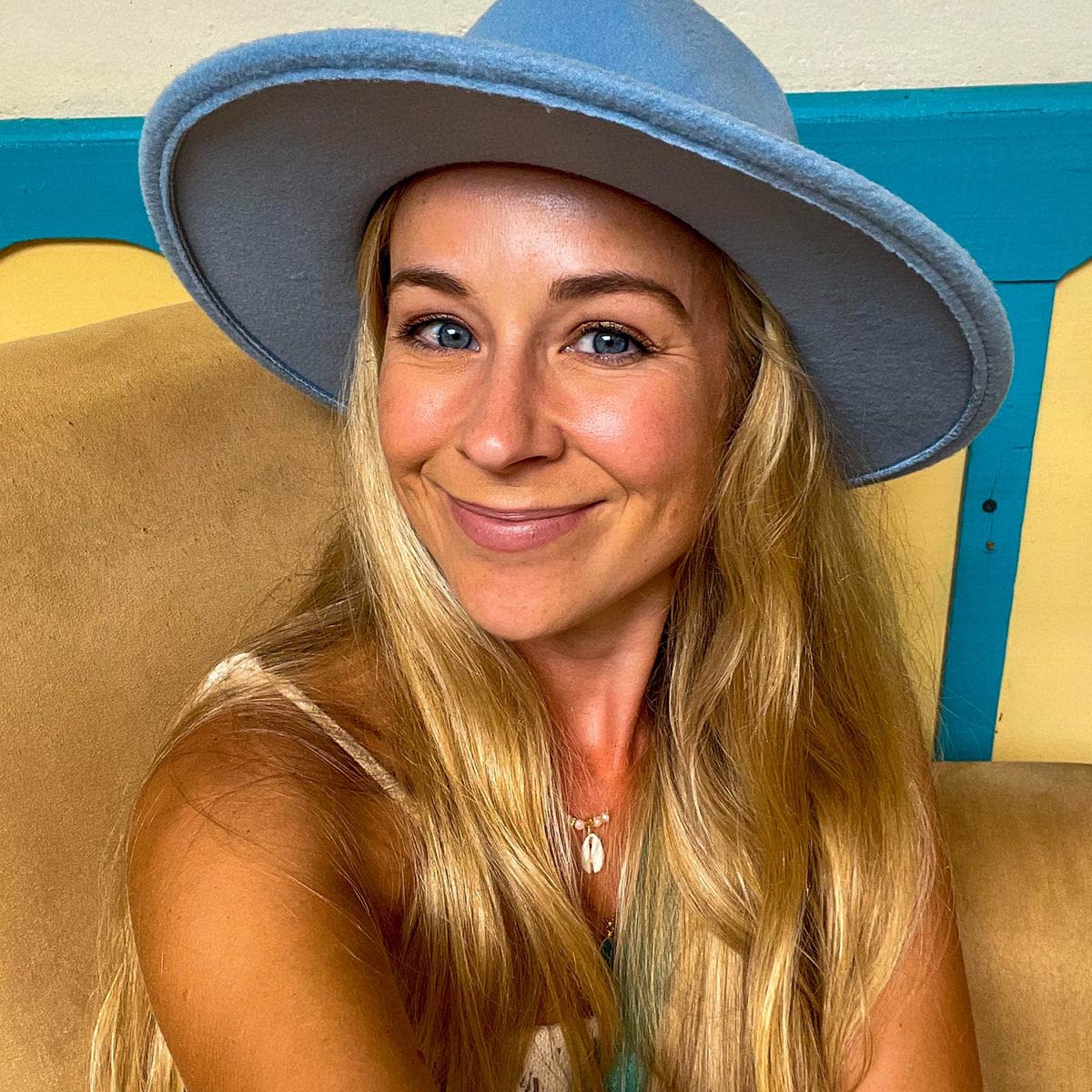
Equipment talk: your first performance surfboard
February 18, 2025You usually become more independent when you get to this level of surfing, which also mean being more strict and picky with what you’re riding, but it’s really important that you develop the skills needed to ride everything from a longboard to a short board. Our head instructor in Portugal, João Durão, explains what surfboard you should go for.
Trying the Malibu or funboard when the waves become a bit better or high performance will still keep things interesting and super fun and will make sure the surfer gets a lot of paddling power and speed allowing him or her to get a lot of waves, especially at crowded days and start working on those nice faster turns on the face of the wave as well improve technique and style.
Shortboards
The level 3 surfer usually wants to get to the more high performance aspects of surfing and copy what the pros are doing, so it’s really common for them to want to grab a short board. However, be careful with the type of shapes you’re getting. Always take in consideration your weight, height, surfing skills and types of waves you want to surf with that board.
Try always to search for volume on a surfboard, especially on a short board where it’ll increase floatation, bounce, stability, balance, control, speed, drive and a lot of paddling power to succeed on catching all the waves on your own. You dont want to have a thin or narrow board or else it will be a long struggle between you and your equipment. Let the surfboard help you and be your best friend, so be humble on your choice and you’ll improve much faster and better. Try not to use less than 30 liters. Look for shapes made specially for small to medium surf and easy conditions (mellow waves), and certain aspects on the board such as the shape of the rails, bottom, tail and low rocker curve that’ll help you a lot in your relationship with the boards.
Material
The level 3 surfer could try to make the step up from hard plastic boards such as Nsp, Ding it, Bic to polyester/styrofoam or epoxy/eps boards, but if you’re not too experienced, you don’t surf too often and your goal is just to have fun and be happy, just stick with a nice epoxy board that will last longer and will be harder to damage. There’s many brands that make some good epoxy boards such as Nsp, Torq, Ding It, Surf series.
Becoming more high performance, you’ll think a lot about fiberglass or light weight epoxy boards and once again there are many brands to choose from. Brands like Lost or Al Merrick from California have a full range of boards and really good shapes of boards made for small to medium waves. You also have Australian shapers like Chilli Surfboards, Dhd, Js. In Europe we have brands like Semente, Polen, Super Brand, Pukas, Bradley. Remember that fiberglass and eps/epoxy boards are more fragile so be extra carefull with your equipment.
Fins
Going over to the fin setups, versatility is a key factor, so try to surf with single fin or twin fin in open face waves (point breaks) or when it’s really small and easy conditions and than step up the game when the conditions become more high performance or more tricky and faster and go for a tri fin board (thruster) or perhaps a quad (four fin) to see all the different feelings you can get from your boards and how fast, how much control, pivot, drive, release, and speed you cant get from them. Take in consideration the size of your fins depending on your weight and the material they are made off to take the best of your choice.

QUICK FACTS ABOUT THE FUNBOARD AND BIG SHORTBOARDS:
Size: 6 – 7 feet
Leash: Approximately same size as your board
Fins: 3-4 fins, depending on the conditions
Material: Foam core and epoxy, polyester or polyethylene cover on top


Maren Gimnes
Maren is a copywriter and content creator with a true passion for exploring the beautiful planet we call home. Her love for the ocean and salty days brought her to Lapoint, where she’s been living the digital nomad life and visiting our surf camps in all corners of the world. Maren aims to inspire others to pursue the surf lifestyle, to never miss a sunset and to follow their dreams.

